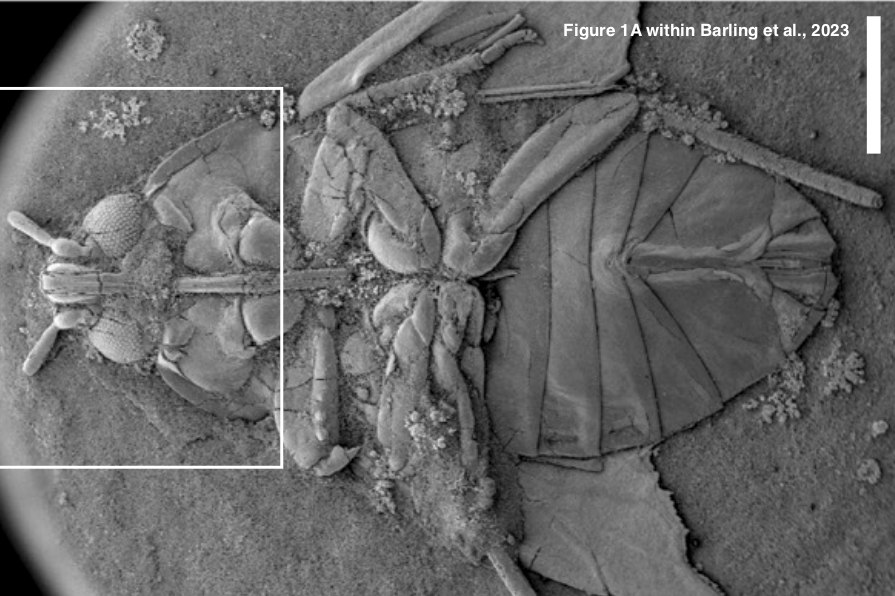Date of Publication: 12 September 2023
One-Line Summary: ~115-million year-old Insect Fossil Found Riddled With Ancient Bacteria*.
Who did it: A team of researchers from China, Switzerland and the United Kingdom.
What did they study: They examined 119 fossil insects from a Lagerstätten* of Early Cretaceous* age, which is now located in the rocks of northeastern Brazil.
What they found: Under the microscope, the researchers noticed clusters of spherical cells near to, and on, the fossils. The shape of the individual spheres bore a strong resemblance to that of modern coccoid* bacteria. The authors believe that the spheres were ancient bacteria that infested the insect soon after its death because both the corpse and the clusters were coated in the mineral pyrite*, and pyrite typically coats a fossil quite soon after its initial burial.
Why does this matter: This results indicate that the insects and the bacteria were contemporaries, meaning that they were alive at the same time and lived as part of the same ecosystem.
What next: Next steps are to look more closely at the morphology and chemistry of the spheres to learn more about what type of cells they are, and how they might have participated in processes beyond the decomposition of dead insects.
Our take: We often think about the lives of fossil organisms, but we rarely think about what happened to them immediately after they died. The death and decay of plants and animals is an important part of the food web as well as the carbon cycle, and to truly understand ancient environments, we need to consider how the bodies of organisms are recycled after they die.
*The basics: Bacteria are a type of prokaryote, that is, a one-celled organism with no inner membrane separating the nucleus from the rest of the cell. A Lagerstätten is a fossil find with unusually good (geologists say “exquisite”) preservation of ancient plants and/or animals. The Early Cretaceous is the very first part of the Age of The Dinosaurs, and starts about 145 million years ago. The fossils that the authors analyzed were alive during a portion of the Early Cretaceous known as the Aptian, which makes them somewhere near ~115 million years old. Coccoid bacteria are bacteria with a distinctly spherical shape. Some examples include Streptococcus (which causes strep throat) and Pneumococcus (which causes bacterial pneumonia). Pyrite is an Iron-bearing mineral that also contains sulfur; it is commonly known as “fools gold”.
Who to talk to: Dr. Saleh Farid, Faculty of Geosciencs and Environment, University of Lausanne, Switzerland: Farid.Saleh@unil.ch
The paper: Barling, N., Saleh, F. and Ma, X., 2023. A unique record of prokaryote cell pyritization. Geology, 51(11), pp.1062-1066.
Journal page: https://watermark.silverchair.com/g51725.pdf
Keywords: Cretaceous, Brazil, insects, fossils, bacteria, minerals, dinosaurs, ecosystem

